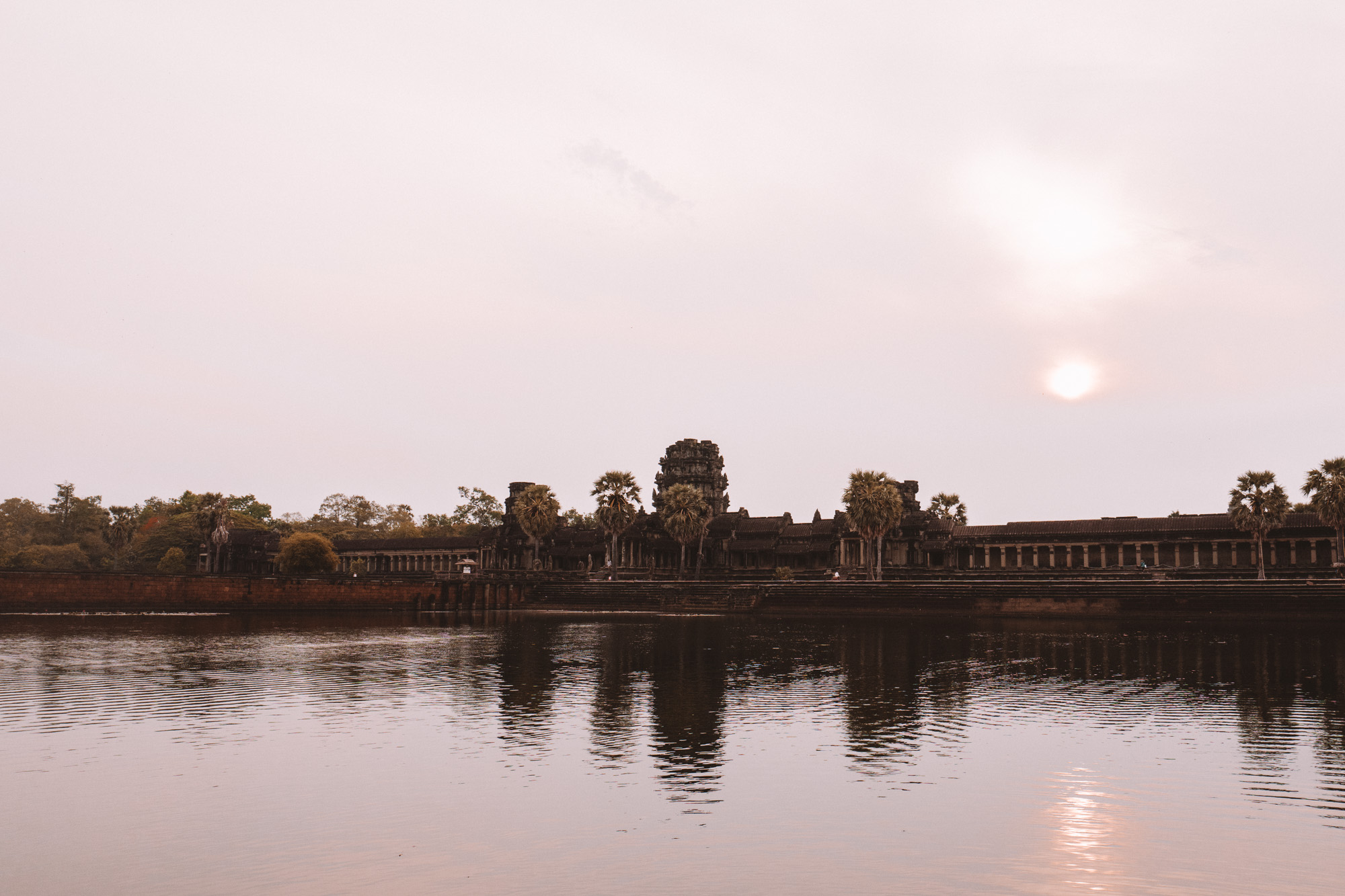 Visiting ancient temples in Siem Reap truly feels like stepping into another world. Angkor Wat is the largest religious monument in the world, and the most ancient. It’s an incredible, sprawling complex of temples located in Cambodia, dating back to the 12th century (aptly named Angkor Wat, “City of Temples” in Khmer). Though well preserved, it’s not uncommon to be stepping over centuries-old tree roots intertwined with aging temple walls. It’s a beautiful sight, definitely worth a trip if you’re heading to Southeast Asia. It’s most common to combine a trip to Cambodia with Vietnam.
Visiting ancient temples in Siem Reap truly feels like stepping into another world. Angkor Wat is the largest religious monument in the world, and the most ancient. It’s an incredible, sprawling complex of temples located in Cambodia, dating back to the 12th century (aptly named Angkor Wat, “City of Temples” in Khmer). Though well preserved, it’s not uncommon to be stepping over centuries-old tree roots intertwined with aging temple walls. It’s a beautiful sight, definitely worth a trip if you’re heading to Southeast Asia. It’s most common to combine a trip to Cambodia with Vietnam.
2-3 Days
—
Day of schedule:
4:30am – buy tickets
5:00am – sunrise at Angkor Wat
6:30am – Pre Rup
7:30am – Ta Som
8:30am – Ta Prohm
10:00am – Bayon—
BEST TIME TO VISIT – November through April
GETTING AROUND – car, tuk tuk or bicycle
CURRENCY – US dollars

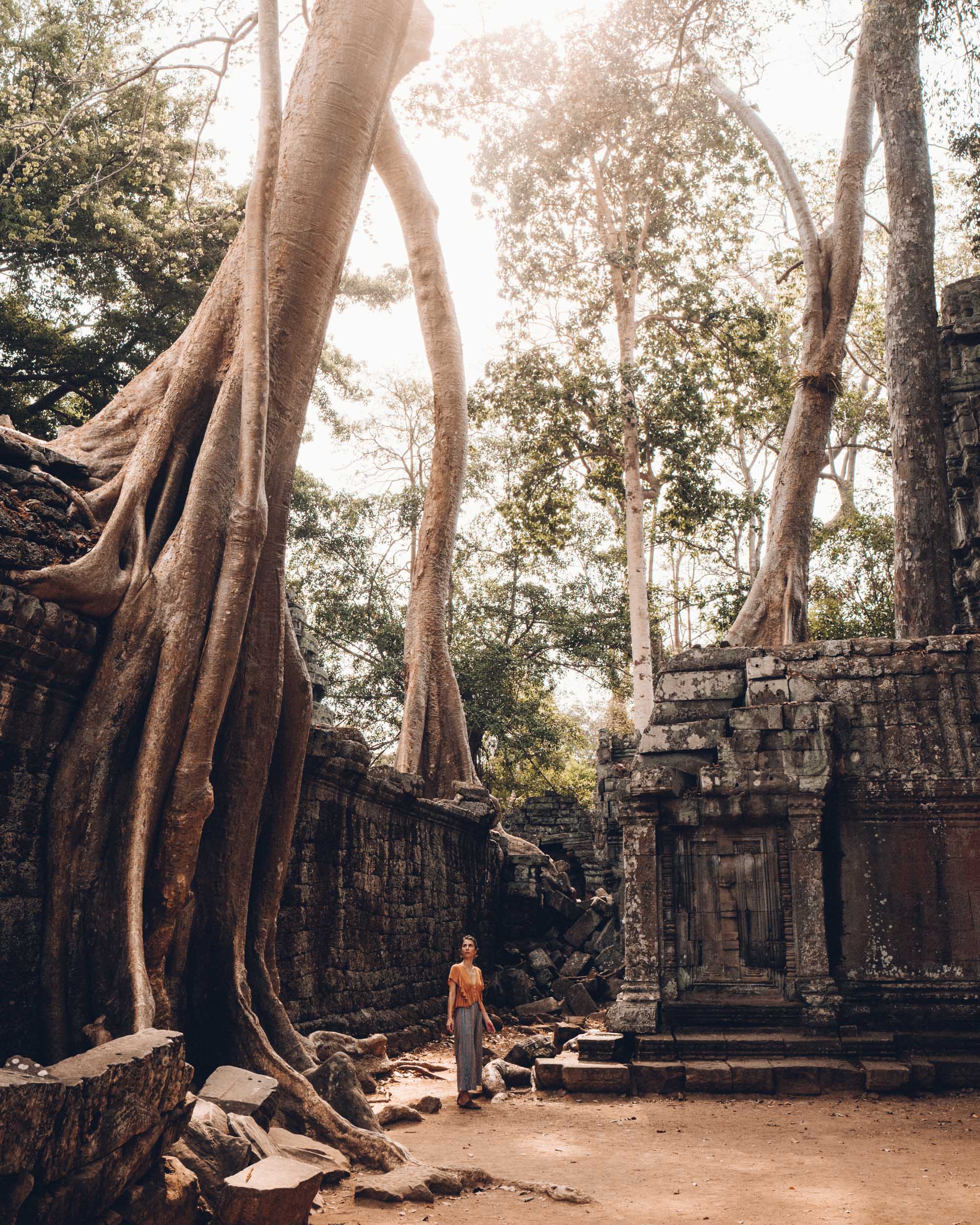
PHOTOS: ANGKOR WAT AND TA PROHM TEMPLES. PRESET COLLECTION USED IN THIS BLOG POST: INDIA COLLECTION.
The first step in planning a trip to the temples in Siem Reap is deciding how many days you’d like to spend exploring Angkor Wat. We opted for two nights in Siem Reap, with one full day visiting the temples. Tickets for Angkor Wat are sold as 1, 2, and 3-day passes. You could easily spend a full weekend here and not see everything — the temples are massive and spread out over 400 acres.
One day at Angkor Wat proved to be perfect for us. We packed it full, seeing 5 temples over the course of a morning, including sunrise at Angkor Wat. We were able to see so much because we opted for a private car instead of a tuk tuk or bicycle. Having experienced the extreme temperatures in Cambodia (100 degrees or more with humidity), I cannot recommend this enough. Walking through one temple was enough to have us both chugging a full bottle of water and placing wet towels on our heads! Having A/C and a break from the sun was the only thing that made us able to see so much in one morning.
There is little I would change about our experience. However, I didn’t find that ‘famous’ sunrise at Angkor Wat was necessary. Our favorite moments from this day were from the temples we visited after, including two that were practically empty. The vast majority of visitors spent their time at the most popular temples (Angkor Wat, followed by Ta Prohm, and Bayon), which leaves you with the opportunity to see some temples sans crowds.
Tickets & Transportation
Tickets — tickets have to be purchased in person from the Angkor ticket center. There are two options: purchasing tickets the day before, or the morning of your visit. We opted for the morning. The lines aren’t long at 4:30am, but they grow quickly as the morning goes on. Tickets are $37 for a 1 day pass, $62 for 2 days, and $72 for 3 days.
Transportation — car, tuk tuk or bike. Arrange your transportation prior to visiting Angkor Wat — many hotels will assist with booking this for you. Siem Reap is vast and it’s impossible to walk from temple to temple. A full day tuk tuk ranges from $25-45. This option will allow you to get to the entrance of many temples, but provides no relief from the intense heat. Our private car cost us $50 for a full day (it typically ranges from $35-$60) and was well worth it. Having a break from the hot sun is hands down why we were able to visit so many temples in a short amount of time. I wouldn’t recommend a bike, due to the heat and size of the complex.
Angkor Wat
[5:00am] from car drop-off to the temple entrance: 10 minute walk
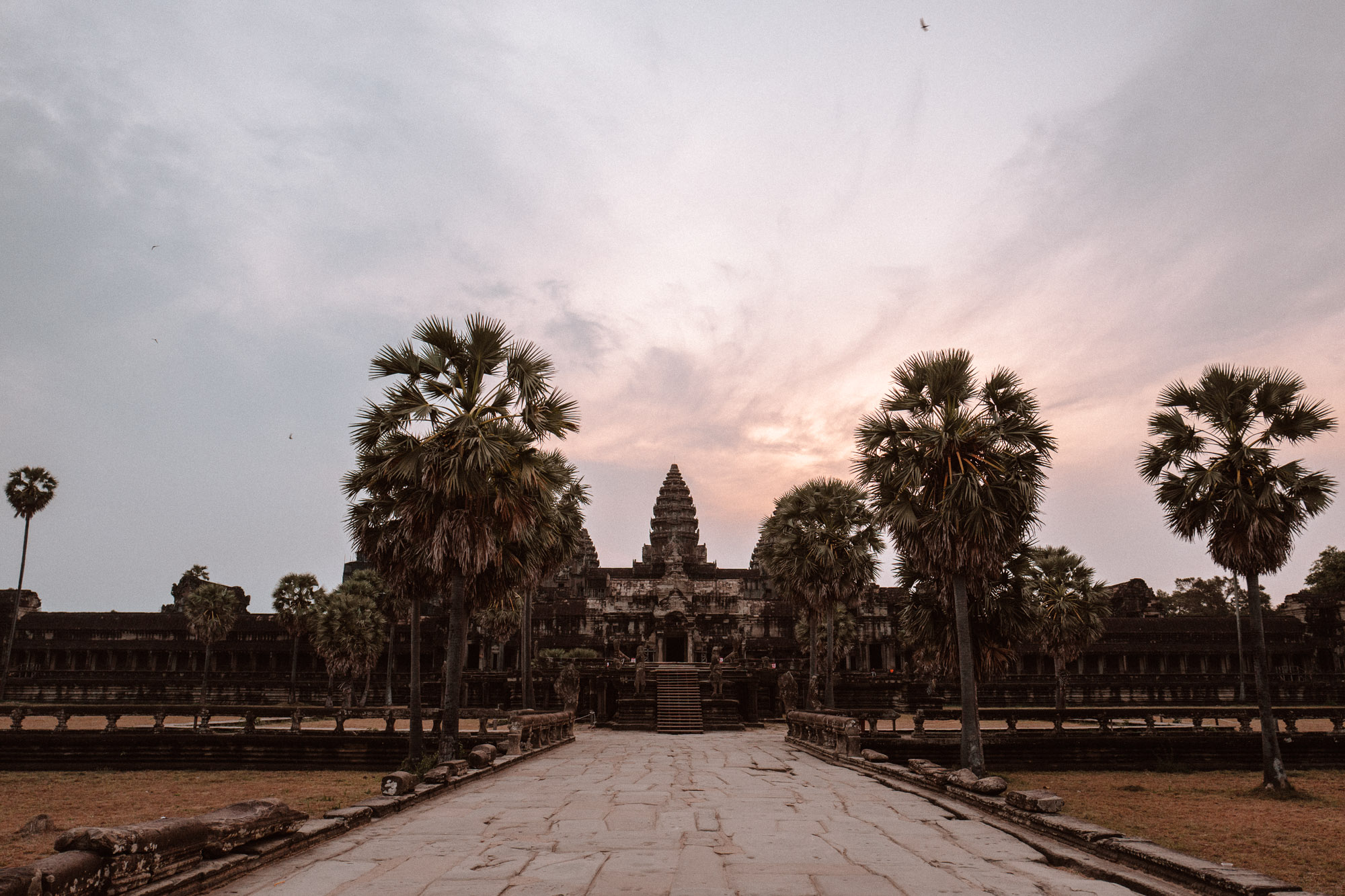

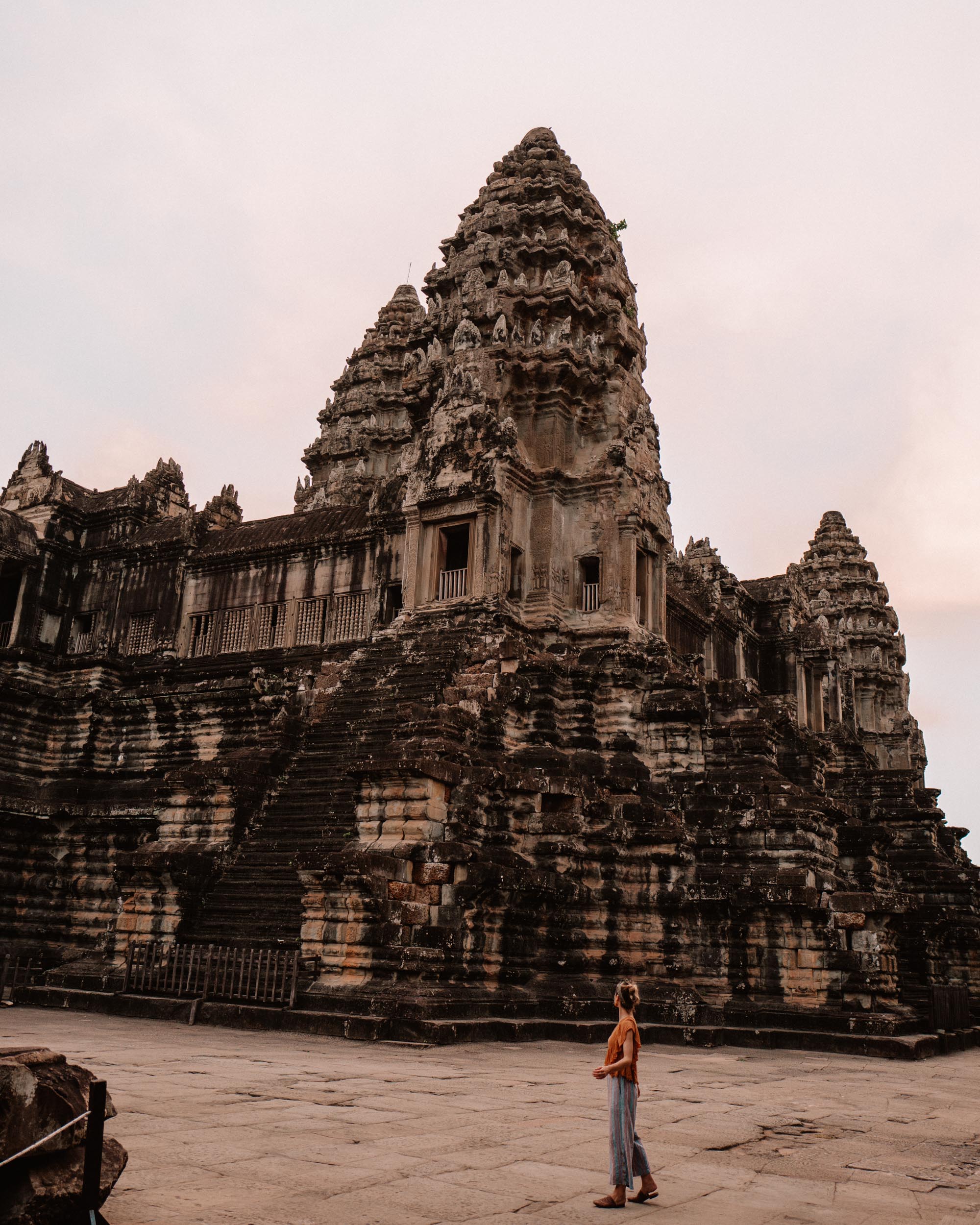
I’m not a morning person, but I’ll always make an exception to avoid the crowds. When you arrive to Angkor Wat you’ll cross a man-made walkway across the water to wait for the sunrise over the front of the temple. I was surprised to see lots of people here for sunrise at 5:00am. Though Cambodia is notoriously hot, it’s also common for it to be overcast. This morning was no exception — the sunrise was nonexistent! After waiting for about thirty minutes, we opted to enter the temple as soon as the guards would start letting people in so we could take photos before everyone rushed in.
My tip: get your tickets a day earlier, and go just after sunrise around 6:00am. The sky was more beautiful when we left the temple and it was too dark for photos in the first hour after the sun rose. Plus — the crowds make it impossible to enjoy a quiet moment anyway!
Pre Rup
[6:30am] drop off is right at the entrance, no walk needed
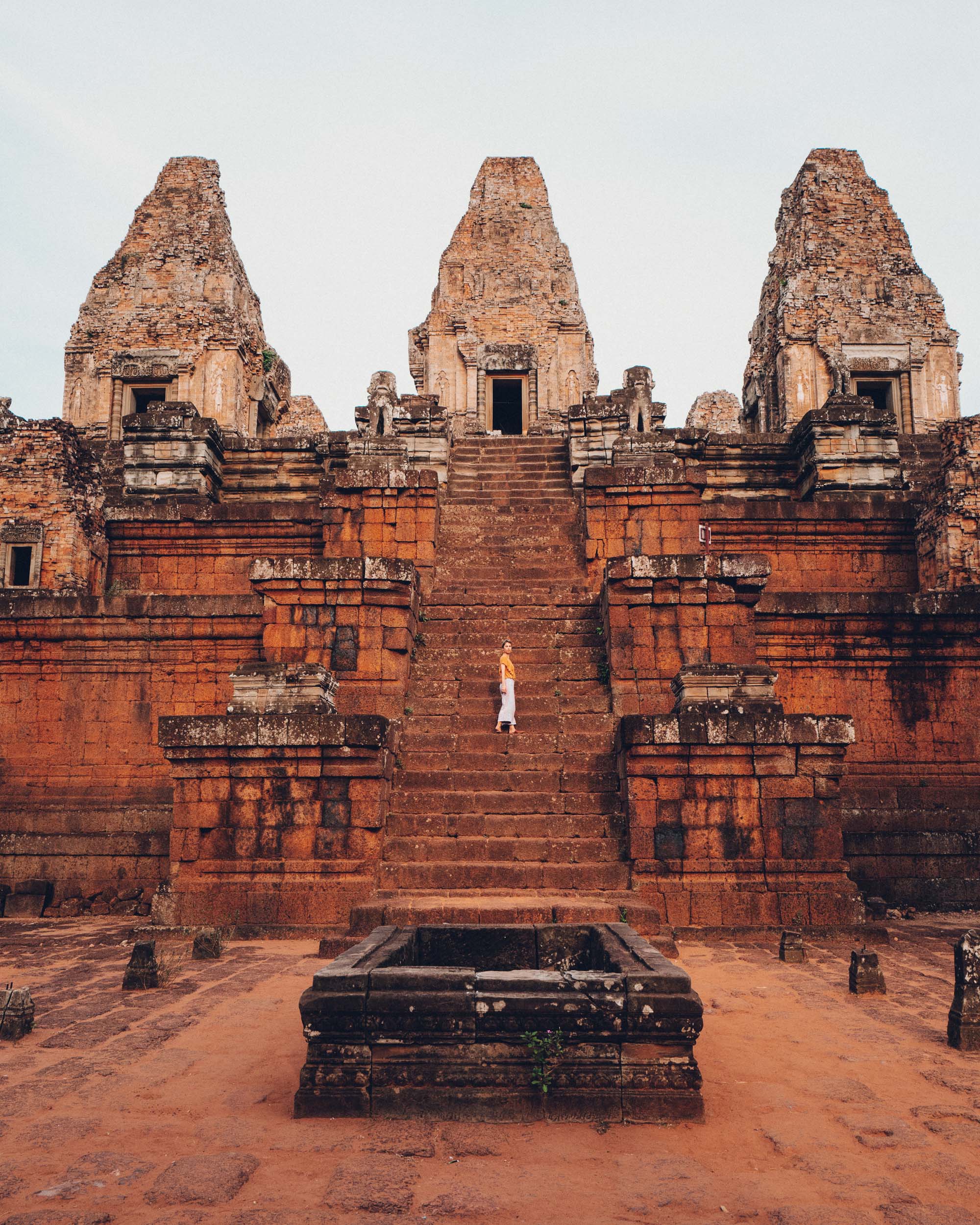
 We stopped at this deserted temple on a whim and it was so worth it! Most people will make their way to Bayon after visiting Angkor Wat, so we had this multi-level temple all to ourselves. The colors here just after sunrise were beautiful.
We stopped at this deserted temple on a whim and it was so worth it! Most people will make their way to Bayon after visiting Angkor Wat, so we had this multi-level temple all to ourselves. The colors here just after sunrise were beautiful.
Ta Som
[7:30am] drop off is right at the entrance, no walk needed
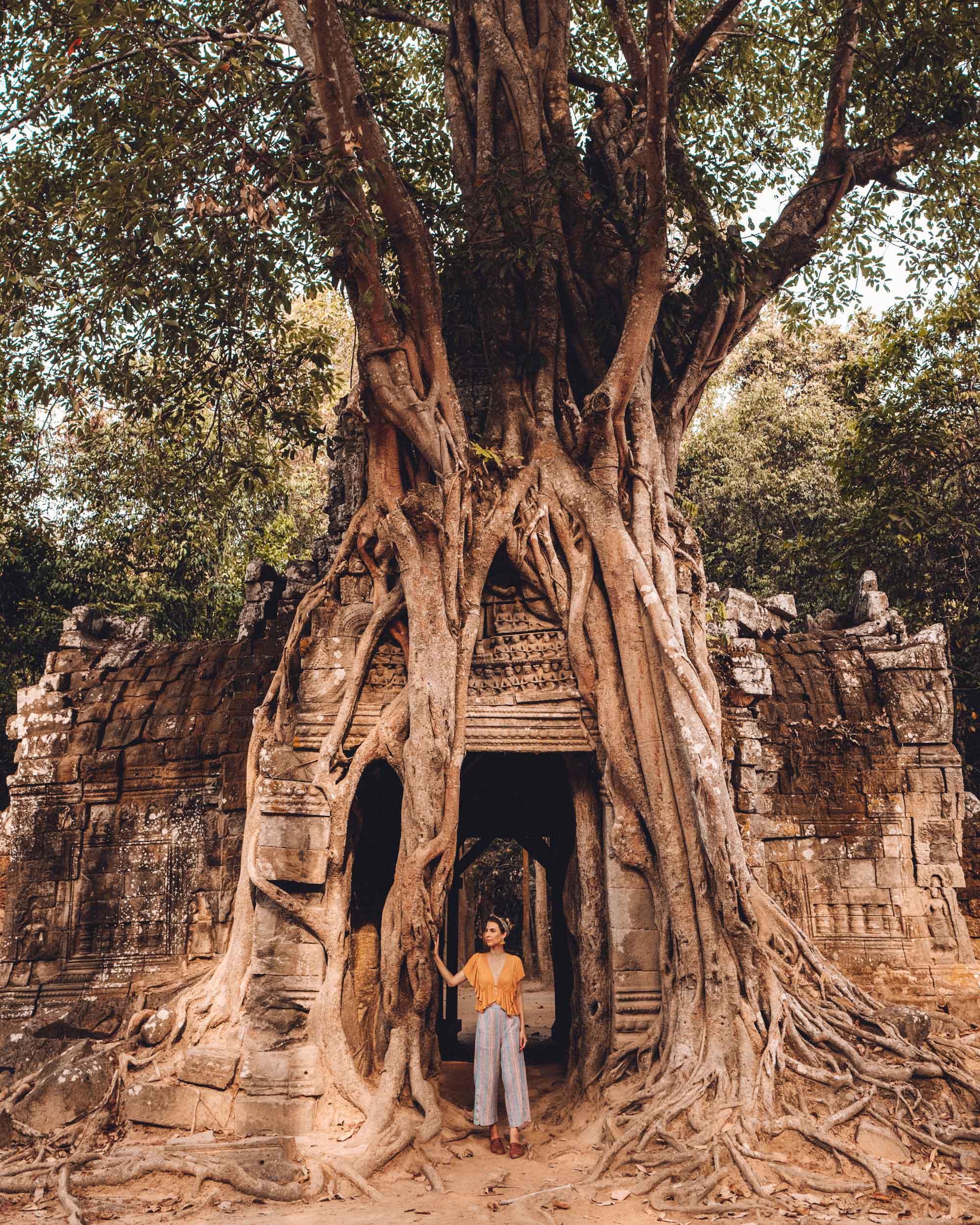
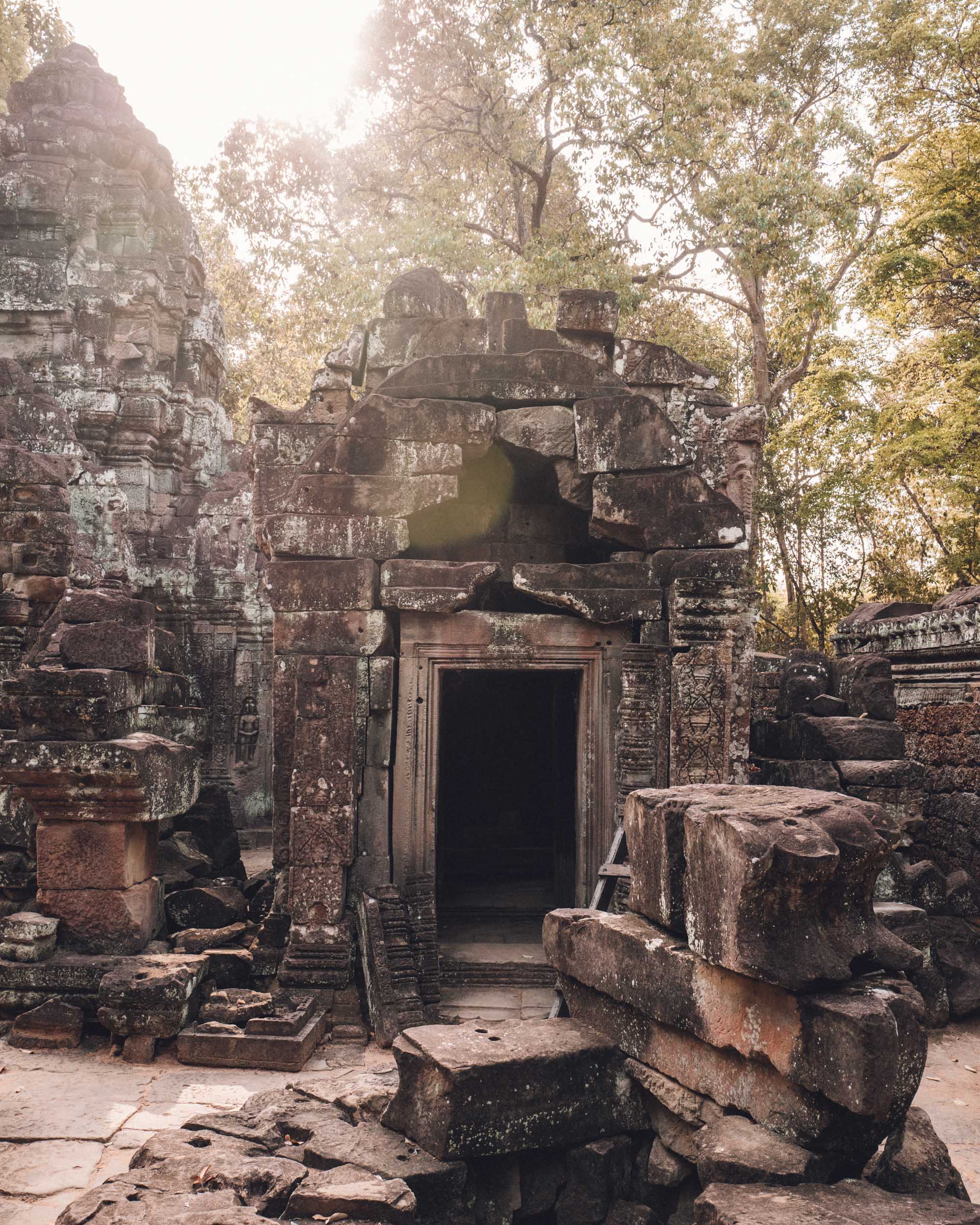 There are two temples that are known for ancient trees growing over the doorways and walls, and this is one of them. It opens at 7:30am and we arrived at 7:20am, so we were the first to enter. We only ran into one family while exploring the grounds for close to an hour. The most famous spot is a centuries-old tree, located in the back of the temple (just walk straight through to the back to find it).
There are two temples that are known for ancient trees growing over the doorways and walls, and this is one of them. It opens at 7:30am and we arrived at 7:20am, so we were the first to enter. We only ran into one family while exploring the grounds for close to an hour. The most famous spot is a centuries-old tree, located in the back of the temple (just walk straight through to the back to find it).
Ta Prohm
[8:30am] from car drop-off to temple entrance: 15 minute walk
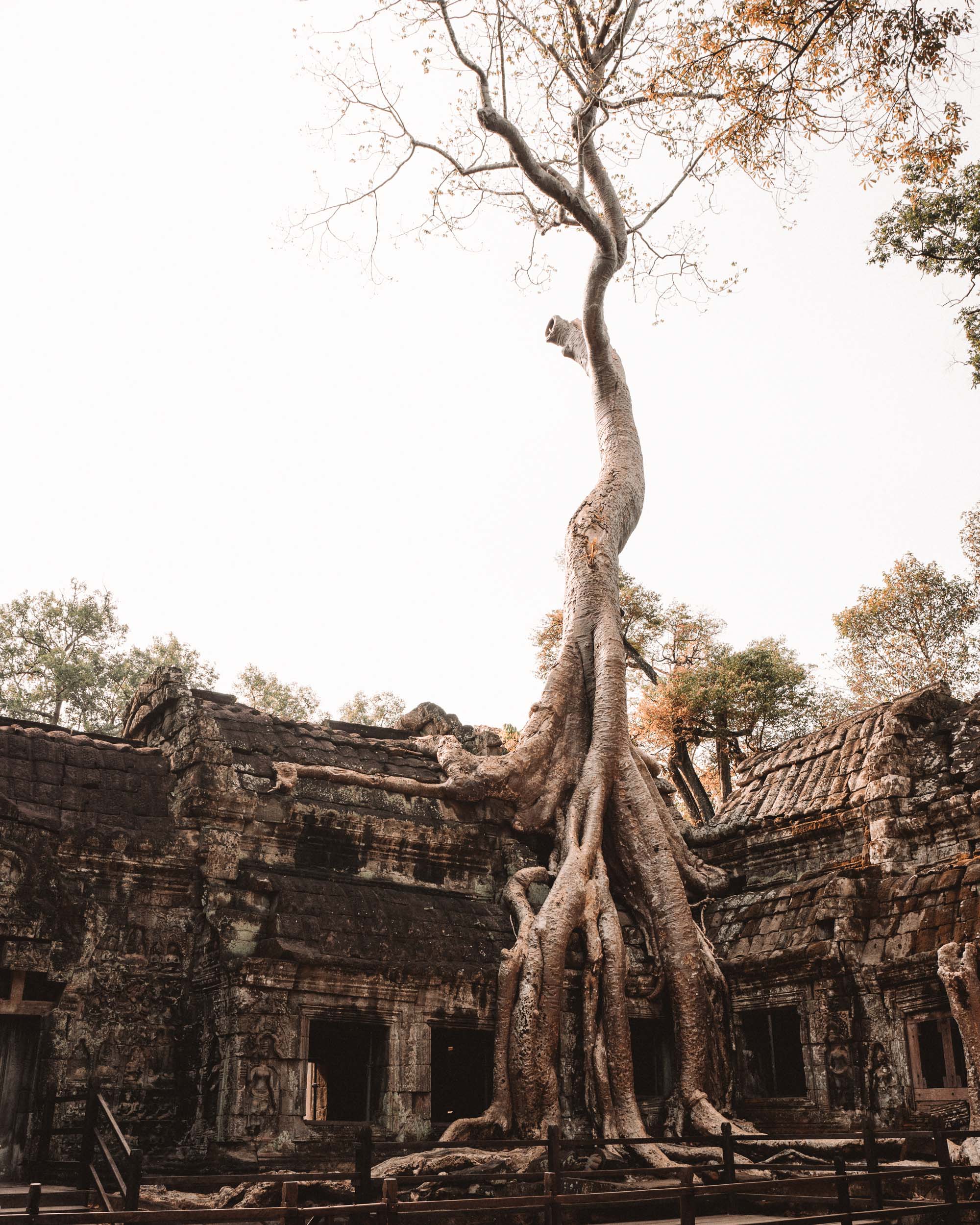
 Next we headed to Ta Prohm. Unlike Ta Som (the previous temple), it has lots of trees growing throughout the temple walls, so there are many spots you’ll find people taking photos. This temple was crowded — it’s well-known, as it’s been featured in the movie Tomb Raider. We were still able to get a few corners to ourselves since most people don’t venture off the main roped paths.
Next we headed to Ta Prohm. Unlike Ta Som (the previous temple), it has lots of trees growing throughout the temple walls, so there are many spots you’ll find people taking photos. This temple was crowded — it’s well-known, as it’s been featured in the movie Tomb Raider. We were still able to get a few corners to ourselves since most people don’t venture off the main roped paths.
Bayon
[10:00am] entrance (first photo below) and temple are separate, you can pull over at each
Our last stop of the day was Bayon temple. This is the largest temple in Siem Reap, known for its many faces carved into the rock. The entrance to the temple is arguably more famous than the temple itself. Have your car or tuk tuk pull over here for a photo — this one wasn’t hard to grab, since it’s still on a main road and doesn’t have much foot traffic.
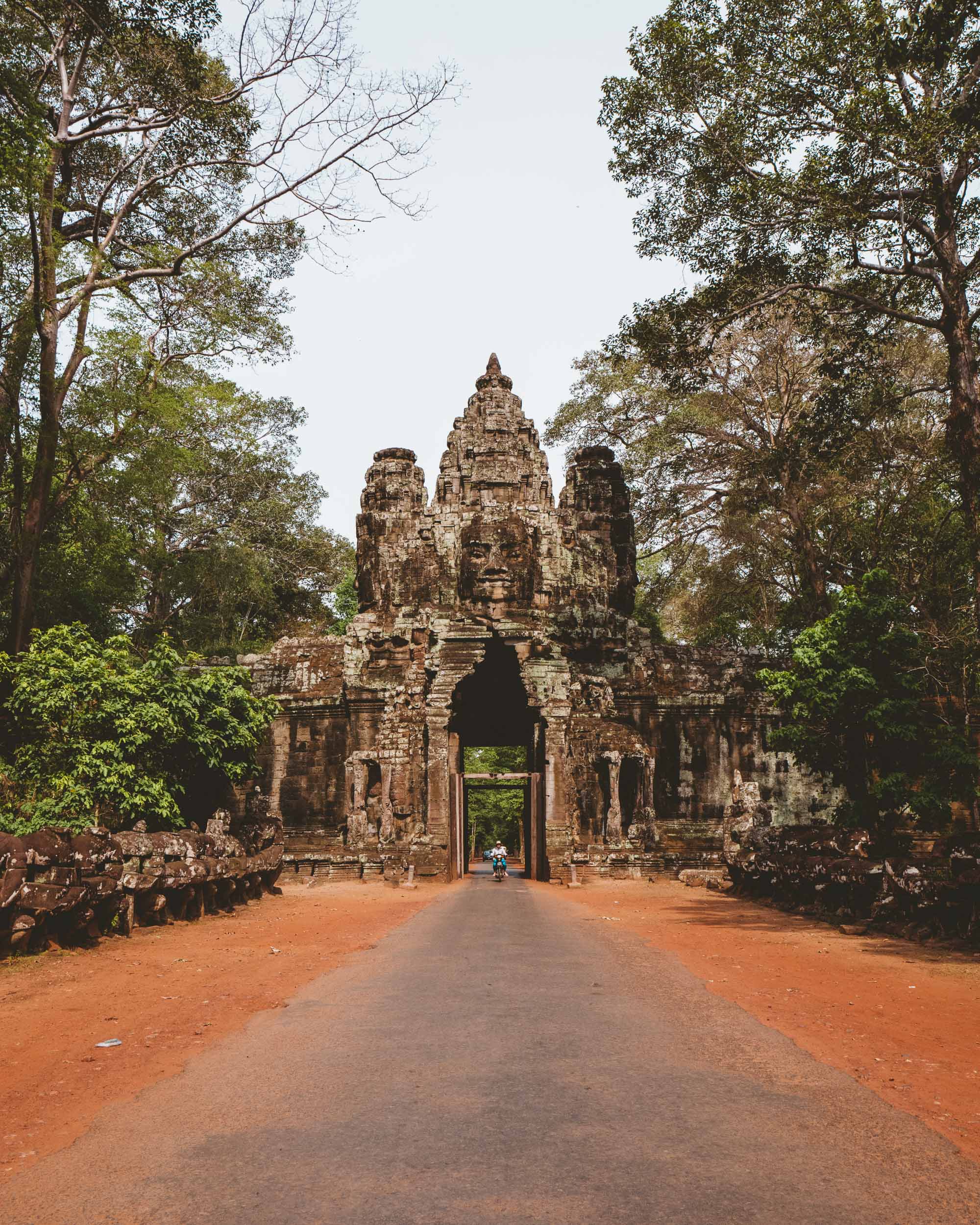
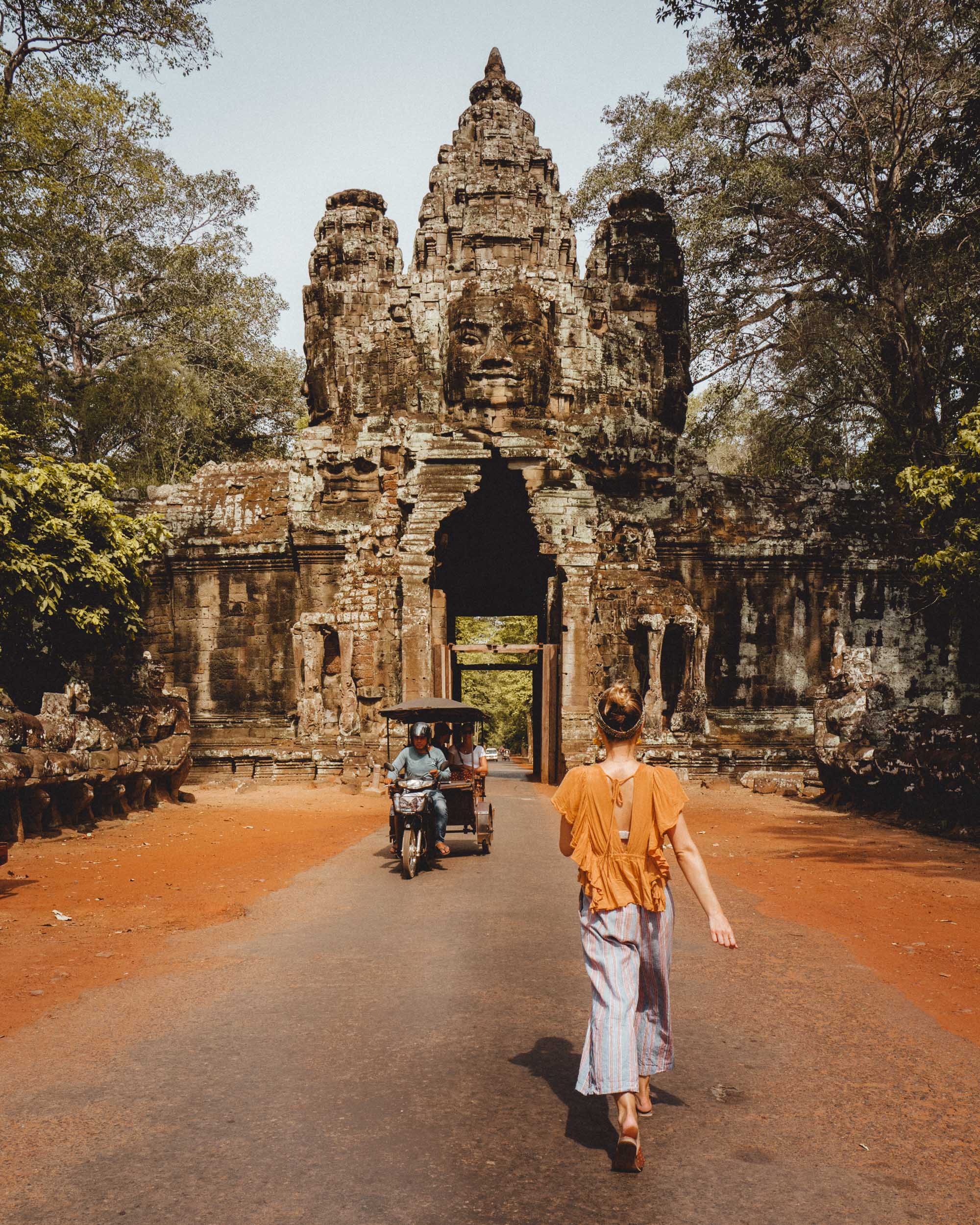
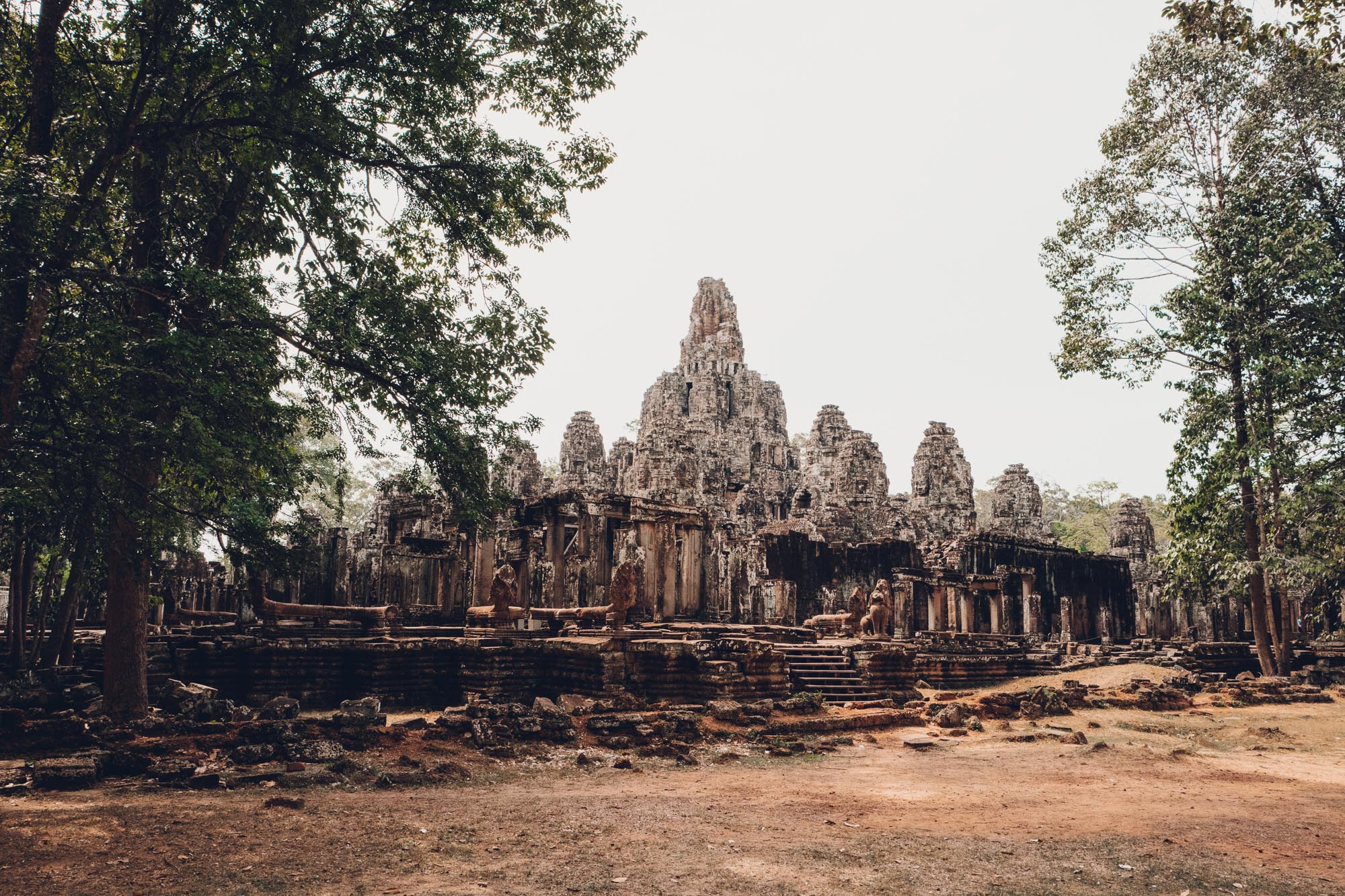
Getting To Siem Reap
We flew in to Siem Reap airport from Vietnam’s Da Nang Airport, near Hoi An. Our prior Vietnam itinerary consisted of a week exploring Hanoi, Tam Coc, Sapa and Hoi An before making our way to Cambodia for 3 days. After this trip we flew back to Hanoi to visit Ha Long Bay for a couple nights before returning home. We spent 12 days in total spread across both destinations.
By plane – there are numerous flights from Vietnam (Hanoi, Hoi An/Da Nang, Ho Chi Minh City), Laos (Pakse, Vientiane, Luang Prabang) and Thailand (Bangkok, Chiang Mai, Phuket, Krabi, Ko Samui). It’s common to combine trips to these countries with a visit to Cambodia.
Alternative transport – other methods of arriving to Siem Reap include buses, ferries, and private cars. I personally did not take this route and therefore would not recommend it. Though we did not encounter any issues in Cambodia, it is still a developing country and much less comfortable (in my opinion) than its bordering countries of Vietnam and Thailand.
Where To Stay in Siem Reap
In Siem Reap you can book a luxury hotel for under $200 a night. We opted to spend a little more than that for a stay at The Beige, which is 30 minutes away from the Angkor Wat complex. It was a beautiful property with luxury tents, and they arranged everything for us to see Angkor Wat: a private driver for our 2-night stay, purchasing tickets the morning we visited Angkor Wat, and outings to Siem Reap’s downtown.
Most hotels here coordinate everything for guests traveling through to see Angkor Wat. While it’s definitely not the ‘local’ experience, it makes for the most efficient trip. I would recommend any of the below hotels (instead of Airbnb) for a more reliable stay in Cambodia.
- La Riviere d’Angkor Resort – $ – clean, elegant rooms centrally located on the Siem Reap river.
- The Thirdfold Residence – $ – modern and straightforward rooms, highly-rated for great service.
- Anjali by Syphon – $ – tropical hanging gardens surround this boutique hotel with a picturesque pool.
- Vihara Residence – $ – a stylish hotel with a garden terrace and bike rentals.
- Belmond La Residence d’Angkor – $$ – an intimate boutique hotel, a haven of lush greenery and palm trees and large pool.
- Jaya House River Park – $$ – Cambodian modernism, and the only boutique plastic-free hotel in Cambodia.
- Maison Polanka – $$ – authentic Cambodian and Khmer luxury wood houses connected by walking paths through the jungle. Where I’d stay next.
- The Beige – $$$ – eco-luxury tents amidst the jungle, with an infinity pool and safari vibe. Where we stayed.
- Anantara Angkor Resort – $$$ – romantic and decadent. Anantara also offers free airport transfers and tuk-tuks to downtown. Where I’d want to splurge.
- Templation Hotel – $$$ – simplistic and chic design at this luxury hotel, which offers a variety of villas with their own private pool.
- Raffles Grand Hotel d’Angkor – $$$$ – a luxurious heritage property that’s played host to the Clintons and Obamas since it opened in 1932.
View All Hotels in Siem Reap
The pool at The Beige hotel overlooks the Cambodian jungle.
Final Notes
Bring water and snacks — It’s hot (think 100 degrees Fahrenheit, and humid) and you’ll spend a number of hours visiting each temple with no food options nearby.
Dress appropriately — I wore slip-on flats, linen pants and a top that covered my shoulders. There is a dress code: your knees and shoulders should be covered when visiting the temples. Keep in mind this area is dusty and your shoes will get dirty. You can get away with sandals as most walks are flat. Make sure to bring a hat, sunglasses, and plenty of sunscreen.
Additional days in Siem Reap — as we landed in Siem Reap in the afternoon, we spent one evening settling into our hotel, the following morning at Angkor Wat, and that evening exploring Pub Street and downtown Siem Reap with dinner at The Sugar Palm. Our flight out was in the evening the next day, so we relaxed by the pool at our hotel. If you have additional time in Siem Reap, consider exploring the downtown, lounging by the pool, or getting a spa treatment.
Arrange your visa in advance — you need a visa to enter Cambodia. We used iVisa a month in advance for both Cambodia and Vietnam. They were easy to communicate with, and we had no issues when entering the country.
Be wary of elephant rides — new laws introduced last year will begin to ban elephant rides in Angkor Wat, but there are still ongoing issues with the ethical treatment of elephants and other animals in Cambodia. Many ‘sanctuaries’ don’t follow ethical practices (as a rule of thumb, follow responsible travel practices and don’t ride or feed elephants, as it means they have been put through harmful training to interact with humans). If you’re interested in seeing elephants in Cambodia, I suggest checking out this organization. It’s high on my wishlist for a future visit. Unfortunately, despite being initially told the elephant I photographed above was rescued, I found out it’s still being used in these situations.
Read Post: Vietnam Itinerary: Hanoi, Hoi An and Ha Long Bay
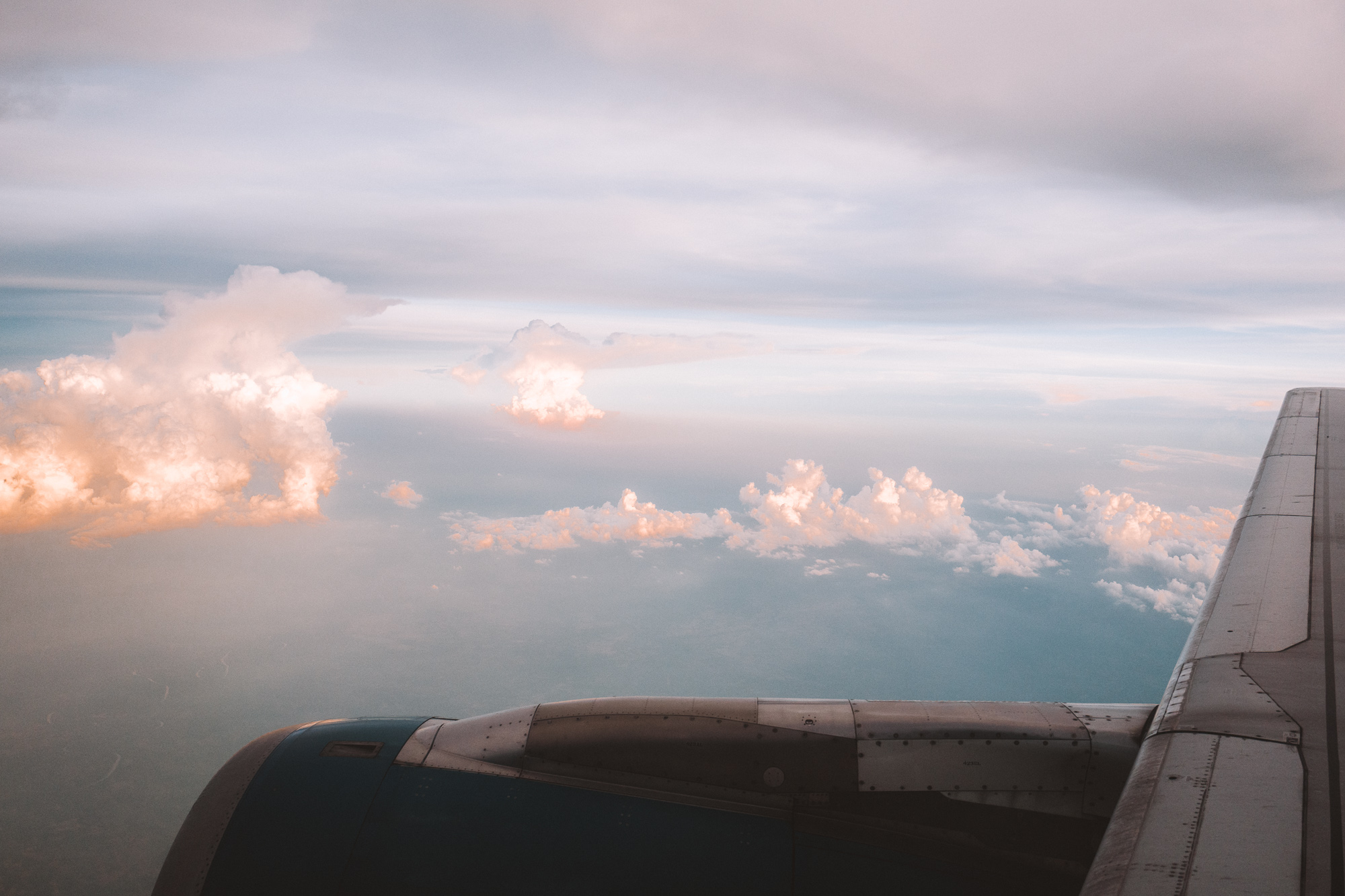
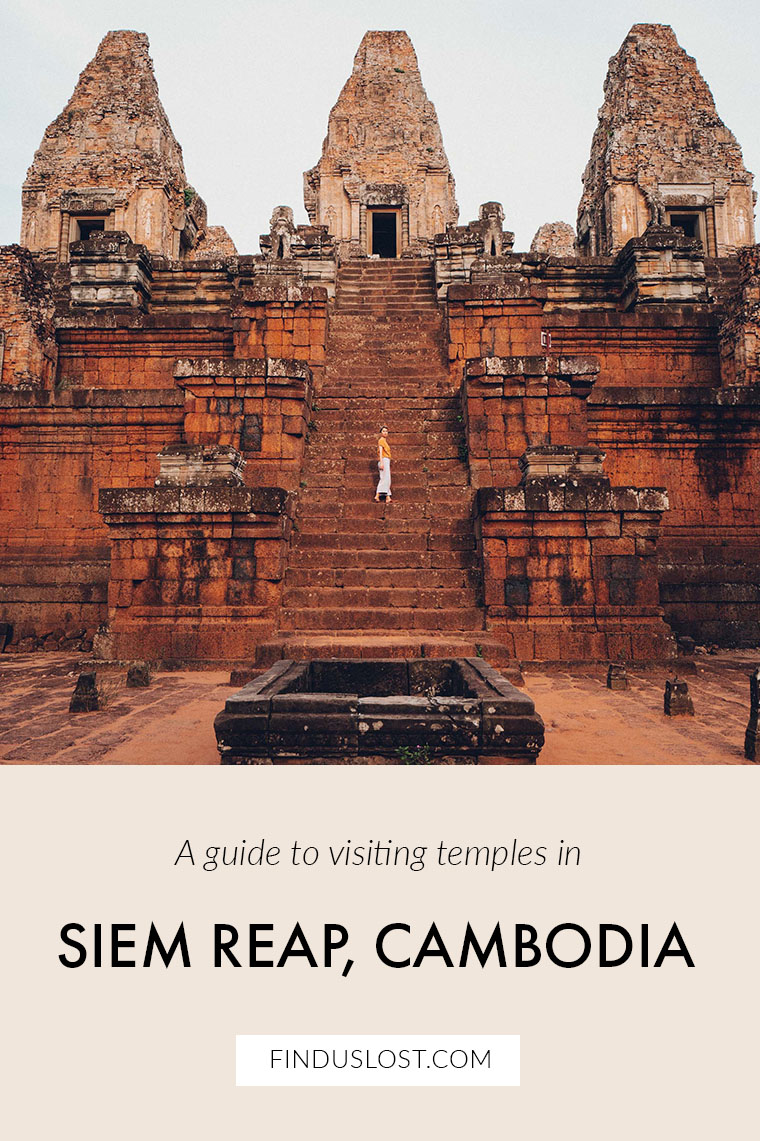

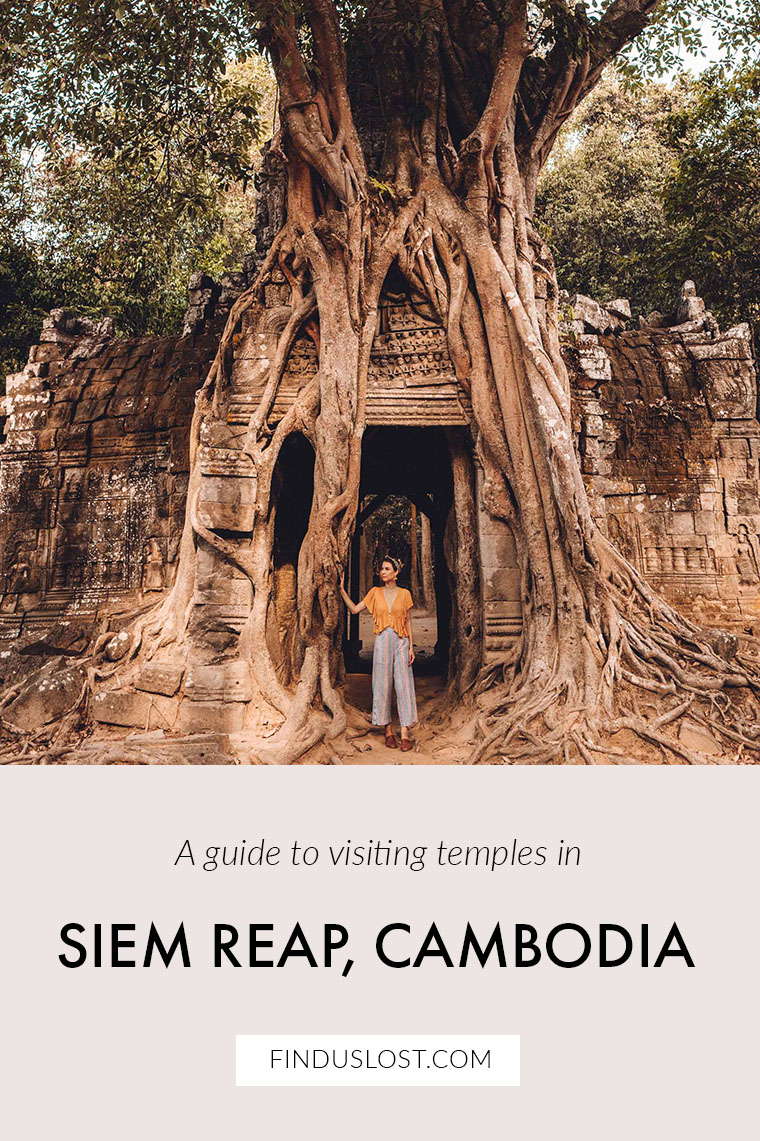
Pin me for later






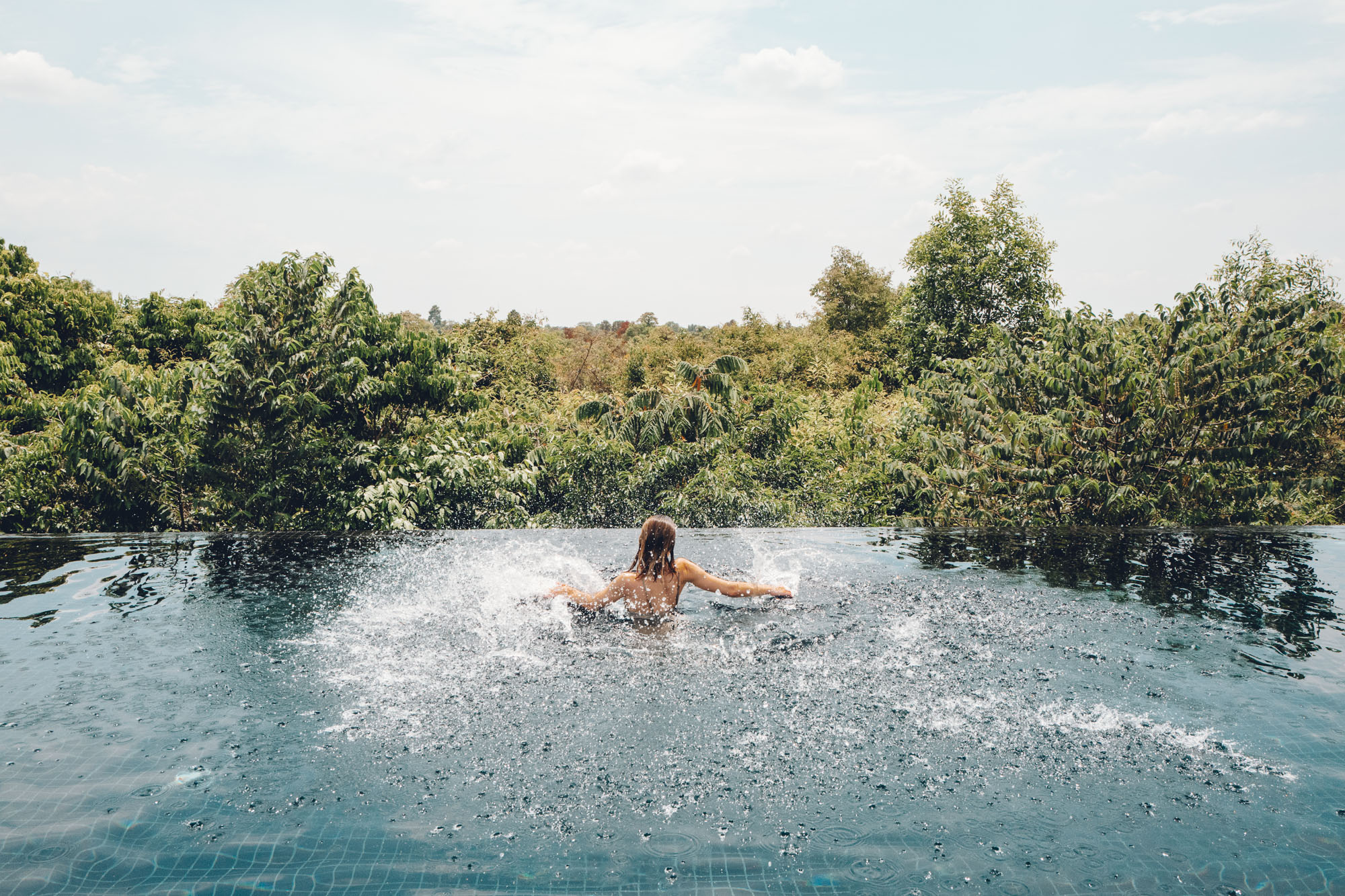
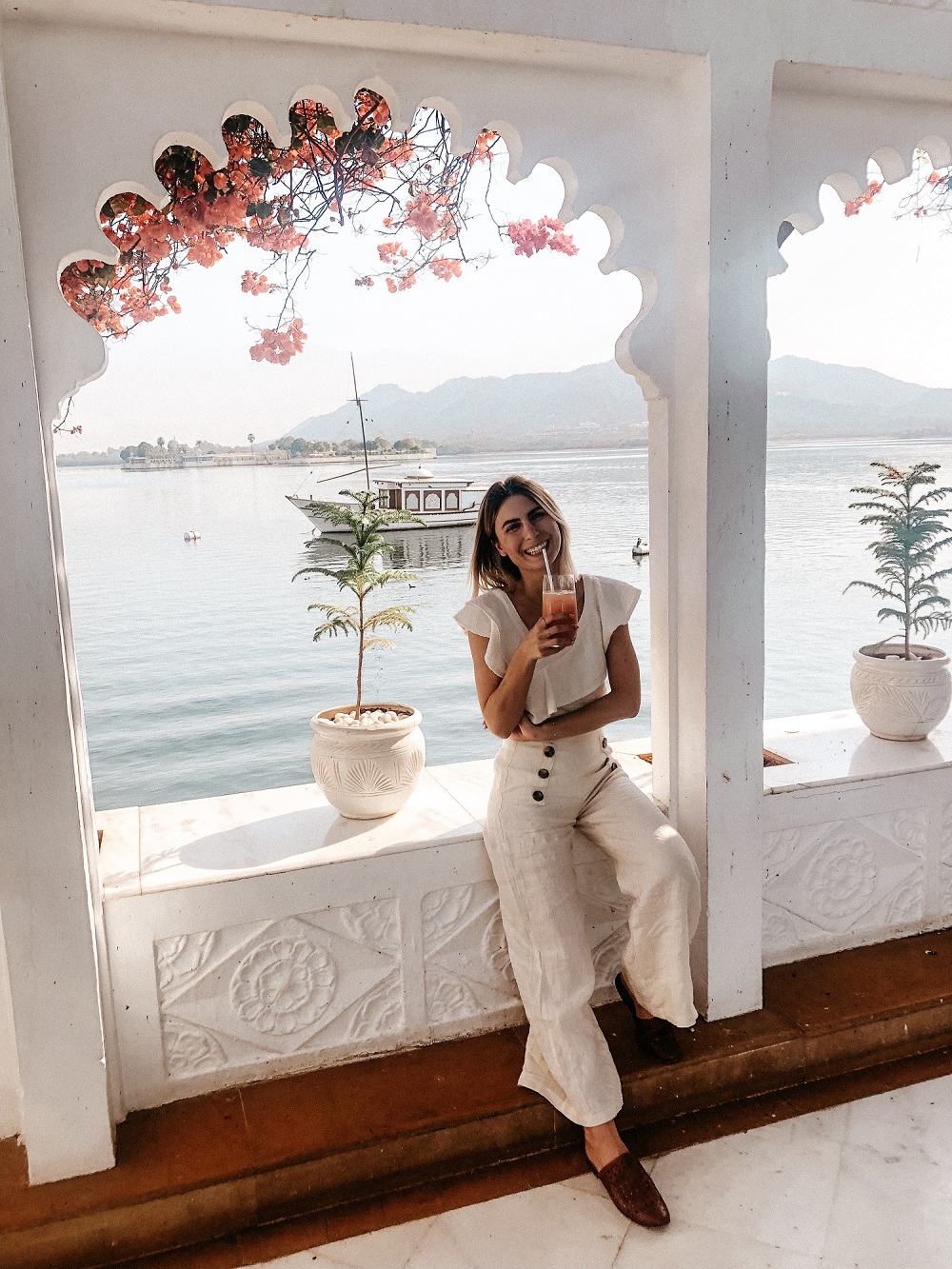

S Says
Thanks for a good guide to Siem Reap, and great pictures. I’ve been to Cambodia in 2011, and really want to go back. Loved the food, the beer, and the people were so nice. We stayed in a familyrun hostel, and got a lot of traveltips from that family. We actually rented bicycles and that went really well, and I would absolutely recommend it. It gives you flexibility because you do not have a driver waiting for you, and I can’t remember the heat being a problem. I think we went there in February, and remember it being sunny, but maybe not that warm. We also got a really nice sunrise, so don’t miss out on that, but I guess it varies from day to day. We did cross the border from Thailand, and remember that being a hassle, but maybe it has gotten better. We combined it with Lao and Vietnam.
Selena Says
Post authorSo happy to hear you enjoyed it! We loved everyone we met as well – so friendly and welcoming. I would love to visit Laos next time. Props to you for biking…it was over 100 degrees F when we visited in March!
Jaryn Says
Hi Selena,
Thank you for your travel expertise! I always come here first to find inspiration when I am planning a trip. I am wondering if you could tell me where the sandals you are wearing in this post are from?
Thank you so much.
Selena Says
Post authorOhh I bought them while traveling! Don’t remember… sorry!